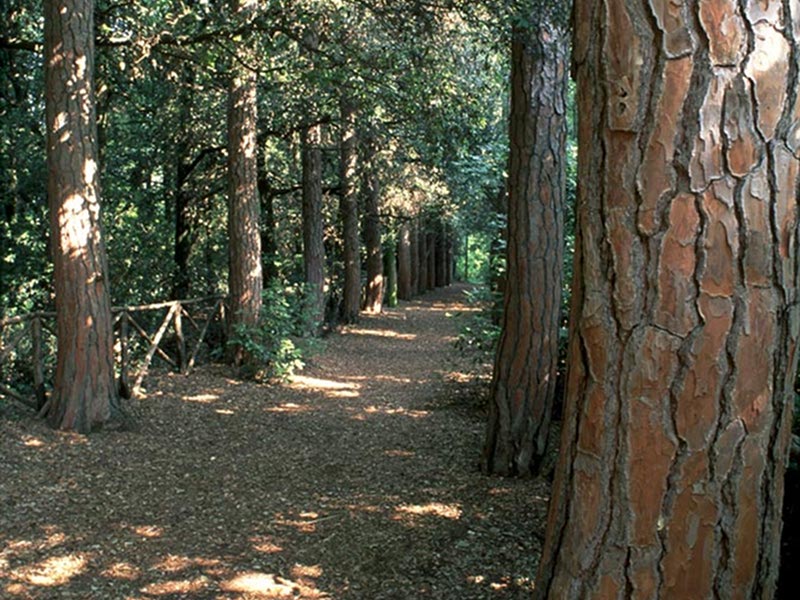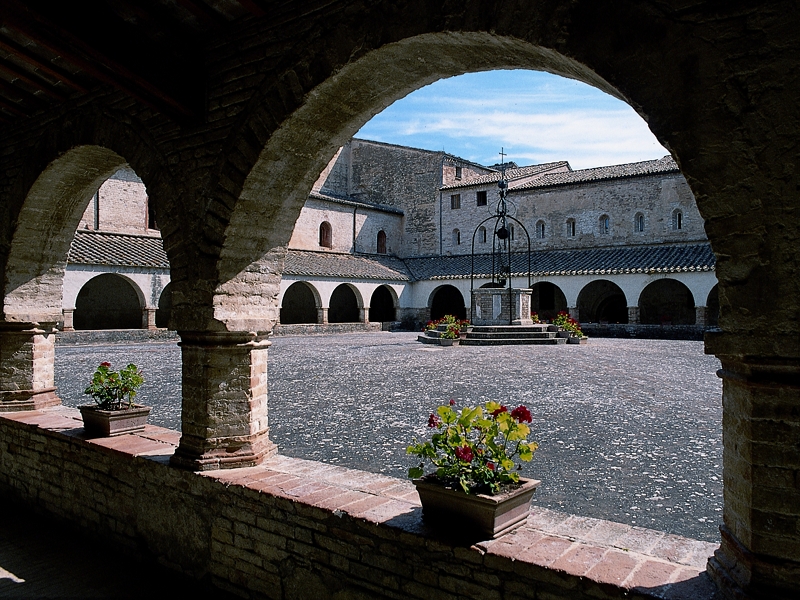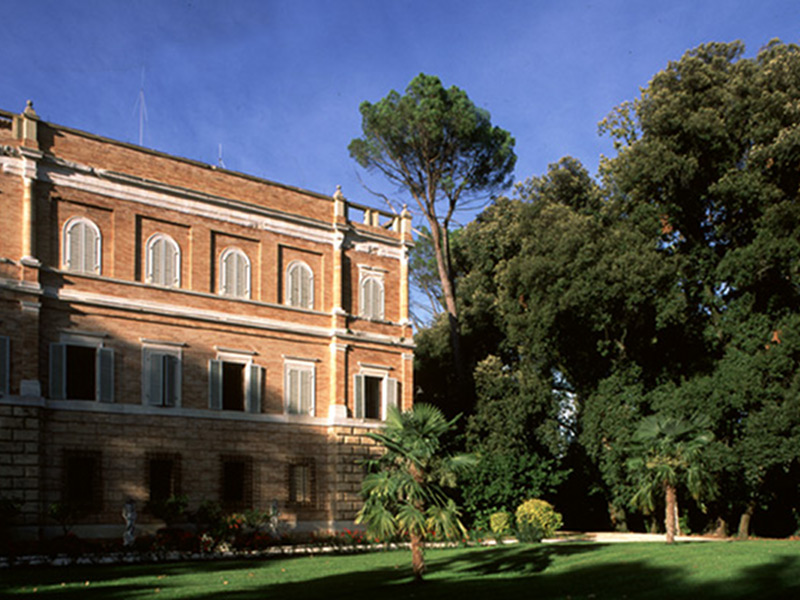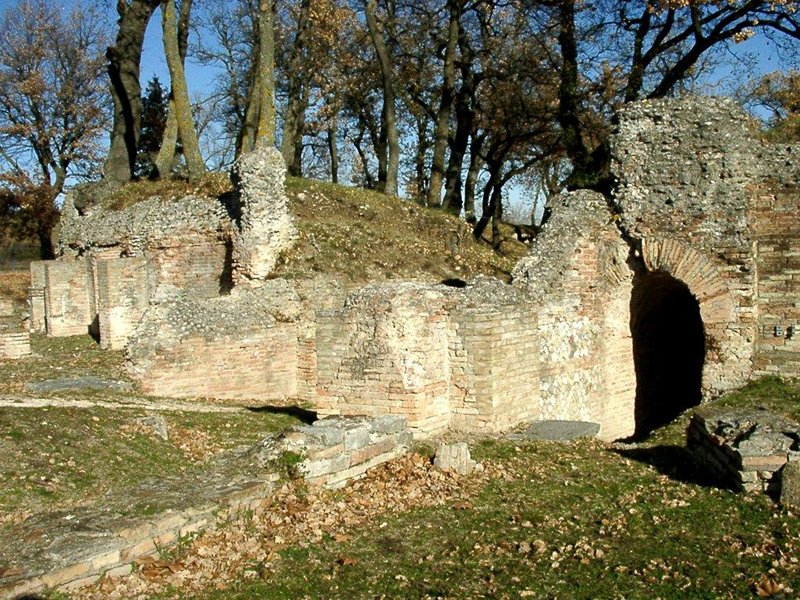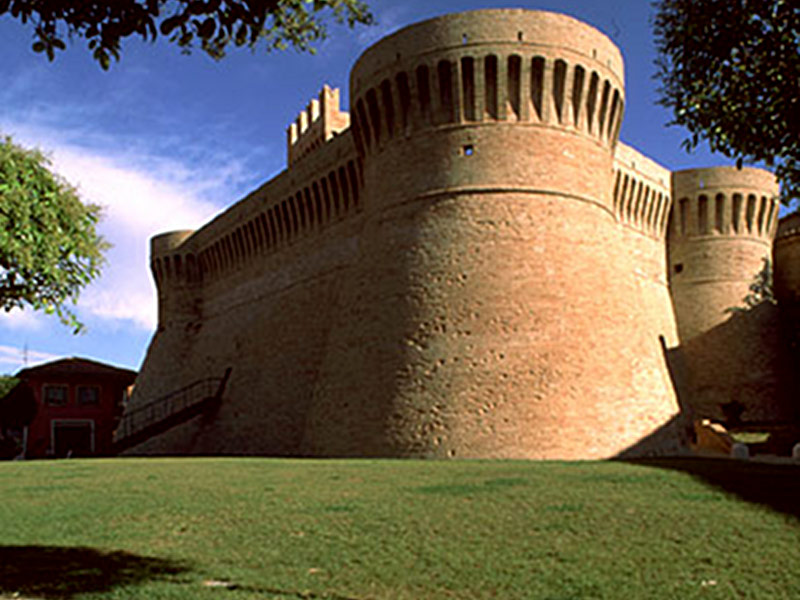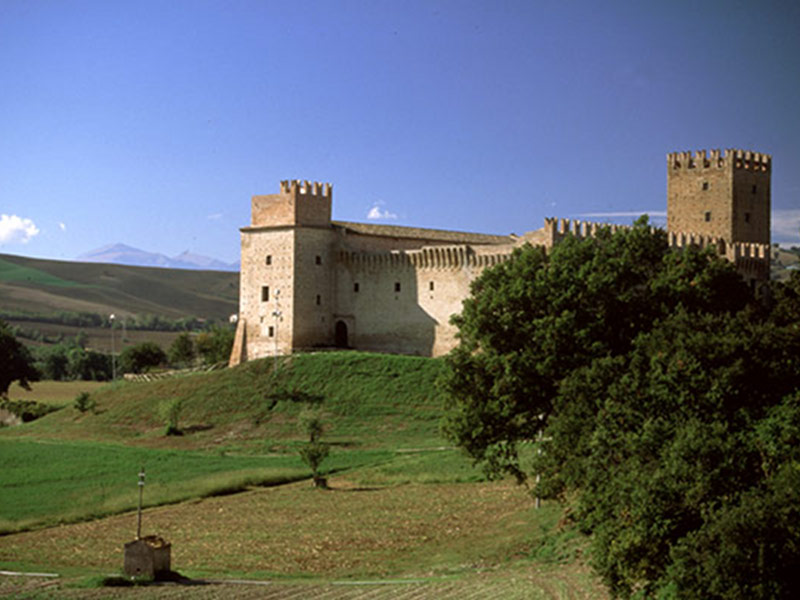Riserva naturale statale Abbadia di Fiastra
www.abbadiafiastra.netPoints of Interest
The Nature Reserve offers the visitor an extraordinary
opportunity to rediscover the nature and the history of this
interesting territory of the "Marca".
Particularly interesting aspects of the reserve are the Selva woodland and the Cistercian Abbey, and in the surrounding territories the archaeological site of Urbs-Salvia, the medieval town of Urbisaglia, and the Rancia Castle.
'La Selva' Woodland
Points of Interest in the Reserve
La Selva woodland is an interesting plain woodland covering over 100 ha, and represents the heart of the Nature Reserve. It is particularly important from a scientific point of view, since it is the last example of the kind of forest which covered until the 18th century the hills of the Marches region. It is characterized by the presence of the Turkey oak and by other trees such as the English oak, the flowering ash, and the field maple. Of interest are also the oriental hornbeam, present exclusively in the southern part of the Marches, Helleborus bocconei, and the so-called mouse plant. Other species are Buxus sempervirens and Carpesium cernuum, a very rare species in the northern part of Italy, even rarest in the central and southern parts.
As far as wildlife is concerned, although reduced in comparison to the past, it is still very interesting since it includes some characteristic species of the hills of the Marches region, such as the roe deer, which has been reintroduced in 1957 and which is controlled today by a preservation project. Among the mammals there are martens, badgers, and weasels; among the birds, tawny owls, lesser spotted woodpeckers, golden orioles, worlblers, short-toed treecreepers, jays, and many other birds characteristic of the woodland environment.
Cistercian Abbey
Points of Interest in the Reserve
Chiaravalle di Fiastra Abbey (12th century) is one of the best preserved Cistercian abbeys in Italy. Here the rule "ora et labora" established by Saint Benedict, besides becoming real and visible through a unique and charming architectural language, has left precious traces in the surroundings, where interesting evidences of this way of life can be found. In particular, it is possible to visit: the Church, whose simple and essential architecture makes the contact with God easier; the cloister, the "sala del capitolo", the caves, a suggestive hypogean environment developing in an articulated manner under the church, the oil cruets deposit, housing the Archeological Museum and the Exhibit on the Abbeys in the Marches; the cellarium, and the great canteen of the "lay brothers" monks.
The Prince's Palace
Points of Interest in the Reserve
Built between the end of the 18th and the beginning of the 19th century, it is situated on the southern side of the monastery where once there were the heated hall called "calefactorium", where the monks used to stay when it was very cold, the refectory, and the kitchen. It is exactly in this palace where the marques Bandini, which became afterwards princes, lived.
Inspired to characteristic neoclassical motifs, the façade of the building facing the Park is remarkable: it is severe with a characteristic brickwork "ashlar" remarking the ground floor. Within it, where there are several frescoes and decorations, there are the offices of the Foundation Giustiniani Bandini and of Fiastra Abbey Nature Reserve.
Urbs Salvia Archaeological Area
Points of Interest in the Adjacent Areas
The Roman town of Urbis Salvia (40 hectares) is enclosed by great walls. It is still rich in monuments and it has an articulated urbanistic structure. As a matter of fact, Urbis Salvia was first a Roman town, and then a colony in the first years of the 1st century AD. It is possible to visit the Theater, one of the largest in the Marches region; the Amphitheater, with its charming oak crown running along its perimeter; the sacred area with the Temple and the Criptoportico, an underground passage decorated with frescoes. Other interesting structures are the Aqueduct Reservoir made by two parallel galleries and the "Edificio a nicchioni", on the plain where the Theater develops, with traces of frescoes. The State Archaeological Museum completes the visit.
Urbisaglia
Points of Interest in the Adjacent Areas
The medieval town of Urbisaglia is enclosed by walls and dominated by a fortress built in the 16th century, whose keep dates back to the 12th century.
From the top it is possible to enjoy a wonderful view of the medieval town and of the territory between Monti Sibillini and Fiastra valley, from the mountains of the Fabrianese to the Adriatic Sea.
S. Maria del Massaccio Church (known also with the name della Maestà) is worth a visit, since it preserves a number of frescoes and ex voto, representing scenes of the popular and religious life of the 15th century.
Rancia Castle
Points of Interest in the Adjacent Areas
Rancia Castle is situated at about 7 km from Tolentino. Before being enlarged and transformed by Maestro Andera from Como (who was commissioned by Rodolfo II from Varano, Lord of Camerino), the castle was an important grancia (farmstead) belonging to the Cistercian monks of Fiastra Abbey. It is nowadays a great square building, endowed with a high keep (about 25 meters) and with large rooms which lodged in the past horses and armigers. The large courtyard with the ancient reservoir used to collect rain is particularly charmin. It is also interesting to remind that the name of the castle is linked to the first real struggle of the Reinassance period, which took place in 1815 between Gioacchino Murat and the Austrian army.


